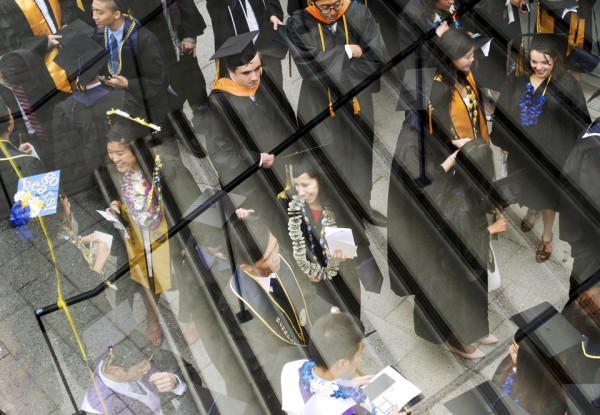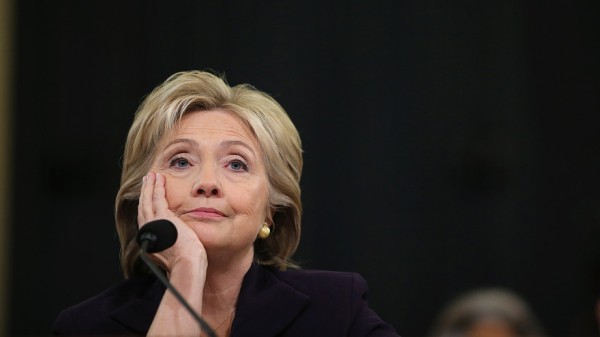Many sociologists argue that ideologies claiming not to see race risk ignoring discrimination.

Jeff Robertson / AP
How many times have you heard someone say that they “don’t see color,” “are colorblind,” or “don’t have a racist bone in their body?” Maybe you’ve even said this yourself. After all, the dominant language around racial issues today is typically one of colorblindness, as it’s often meant to convey distaste for racial practices and attitudes common in an earlier era.
Many sociologists, though, are extremely critical of colorblindness as an ideology. They argue that as the mechanisms that reproduce racial inequality have become more covert and obscure than they were during the era of open, legal segregation, the language of explicit racism has given way to a discourse of colorblindness. But they fear that the refusal to take public note of race actually allows people to ignore manifestations of persistent discrimination.
For the first half of the 20th century, it was perfectly legal to deny blacks (and other racial minorities) access to housing, jobs, voting, and other rights based explicitly on race. Civil-rights reforms rendered these practices illegal. Laws now bar practices that previously maintained racial inequality, like redlining, segregation, or openly refusing to rent or sell real estate to black Americans. Yet discrimination still persists, operating through a combination of social, economic, and institutional practices.
Concurrently, it is no longer socially acceptable in many quarters to identify oneself as racist. Instead, many Americans purport not to see color. However, their colorblindness comes at a cost. By claiming that they do not see race, they also can avert their eyes from the ways in which well-meaning people engage in practices that reproduce neighborhood and school segregation, rely on “soft skills” in ways that disadvantage racial minorities in the job market, and hoard opportunities in ways that reserve access to better jobs for white peers.
The Atlantic’s Conor Friedersdorf recently argued that the academic left errs in attacking colorblindness. He suggested that encouraging whites to be color conscious and to think of themselves in racial terms would encourage the nativism embraced by some Donald Trump supporters—that a heightened awareness of whiteness would produce a sense of persecution, and encourage some to rally in defense of white rights. He contends that there is some merit to colorblindness that has been ignored by what he describes as “the academic left,” which spends too much time focused on nitpicking colorblindness rather than drawing attention to “macroaggressions” such as “racially tinged hatred and conspiracy theories directed at the first black president” or the convenience of labeling Mexican immigrants rapists “despite the fact that first-generation immigrants commit fewer crimes than native born Americans.”
As a presumptive member of the “academic left” that Friedersdorf critiques, I read the post with particular interest. I think that Friedersdorf makes some important points worth more detailed attention from both academics and those outside the academy who are familiar with the debates and concepts he references. For instance, academic debates can often become divorced from broader audiences. It is way too easy for academics in many fields to ground their conversations, disputes, and discussions among other like-minded scholars. He’s right to note that, by and large, academics can do a much better job engaging with folks outside of our ivory towers.
However, there are some misrepresentations in Fridersdorf’s piece as well. Based on a single statement from one book chapter in an edited volume, Friedersdorf makes the sweeping generalization that “the academic left casts all proponents of colorblindness as naïve.” I’ve read books and articles by numerous sociologists who critique the colorblind ideology, and while they find problems with the ways this perspective allows individuals to ignore patterns of racial bias, I’ve never seen any studies that broadly categorize advocates of colorblindness in this way. What’s more important to sociologists are the consequences of how this ideology has implications for social inequality.
My colleague Eduardo Bonilla-Silva, for example, has written extensively about the idea of colorblindness, charting the ways that it functions as an ideology that legitimizes specific practices that maintain racial inequalities—police brutality, housing discrimination, voter disenfranchisement, and others. His book Racism Without Racists is part of a broad set of sociological research that draws attention to the ways that colorblind ideology undergirds bigger, more problematic social issues.
There are more than a few members of the “academic left” who argue that colorblindness is problematic precisely because it offers a way to avoid addressing social problems.
Yet, in addition to suggesting that the academic left casts all proponents of colorblindness as naïve, Friedersdorf also contends that they waste time picking apart this concept rather than addressing “macroagressions” like police brutality and growing expressions of virulent racist hatred. But Bonilla-Silva, among others, describes the ways that colorblindness sustains these very macroaggressions that Friedersdorf thinks are ignored. In other words, Friedersdorf suggests the academic left wastes time dissecting the concept of colorblindness, and would be better served focusing on more pressing, systemic processes of inequality. But a careful read of sociological literature in this area finds that there are more than a few members of the “academic left” who argue that colorblindness is problematic precisely because it offers a way to avoid addressing these exact social problems. Other sociologists like Jessie Daniels and David Cort focus explicitly on researching hate speech on the internet and the lower rates of crime among immigrants relative to native born Americans, respectively—the very issues that Friedersdorf, by his own admission, charges are important and believes are overlooked by the academic left. Sociologists are actually very involved in highlighting these macroaggressions—and in underscoring the ways colorblind ideology allows them to go ignored.
Advocates of colorblindness, like Friedersdorf, tend to claim that emphasizing whites’ group identity as whites (rather than as individuals) is counterproductive. Rejecting colorblindness and encouraging whites to see themselves as members of a distinct racial group, they argue, will produce nativism. They will cling to, rather than critique, the privileges that whiteness affords, which are jeopardized by a more multiracial society. Friedersdorf calls it naïve to believe that upon focusing on their status as members of a racial group and the privilege and power that affords them, “masses of white people will identify more strongly with their racial tribe and then sacrifice the interests of that tribe.”
This is, in the abstract, a compelling point. The trouble is that the weight of the scholarly evidence directly contradicts this argument. Sociologists like Karyn McKinney, Eileen O’Brien, Joe Feagin, Hernan Vera, and Matthew Hughey, who have studied the pathways and trajectories by which whites become involved in antiracist activism, show that contrary to Friedersdorf’s beliefs, moving away from colorblindness can actually serve as a pathway towards antiracism. In many of these studies, as whites came to understand themselves as members of a racial group which enjoyed unearned privileges and benefits, this compelled them to forge a different sense of white identity built on antiracism rather than simply supporting the status quo. Moving away from the colorblind ideology that sociologists critique—the idea that it’s admirable to profess not to see color, that it’s problematic to see oneself as a member of a racial group—is, according to the research in this area, actually an important step to antiracist activism.
In most social interactions, whites get to be seen as individuals. Racial minorities become aware from a young age that people will often judge them as members of their group.
There’s a strong emphasis on individualism in American culture. Friedersdorf argues that “race is a pernicious concept that robs people of their individuality … the academic left also underestimates how divisive it can be to put anything other than individualism at the center of identity.” But ironically, this focus on individualism is itself a function of group position. Whites, by and large, enjoy the luxury of promoting the importance of the individual, because they benefit from living in a racially stratified society where whiteness is normalized. In most social interactions, whites get to be seen as individuals. Racial minorities, by contrast, become aware from a young age that people will often judge them as members of their group, and treat them in accordance with the (usually negative) stereotypes attached to that group.
Everyone wants to be treated as an individual and recognized for their personal traits and characteristics. But the colorblindness that sociologists critique doesn’t allow for this. Instead, it encourages those who endorse this perspective to ignore the ongoing processes that maintain racial stratification in schools, neighborhoods, health care, and other social institutions. Can color consciousness draw attention to these issues? The research demonstrates that it can lead to more understanding of our racially stratified society and can give rise to a willingness to work for change. So from that perspective, it doesn’t seem worth abandoning just yet.
Originally seen via The Atlantic by: ADIA HARVEY WINGFIELD – A contributing writer for The Atlantic and a professor of sociology at Washington University in St. Louis. She is the author of No More Invisible Man: Race and Gender in Men’s Work.





